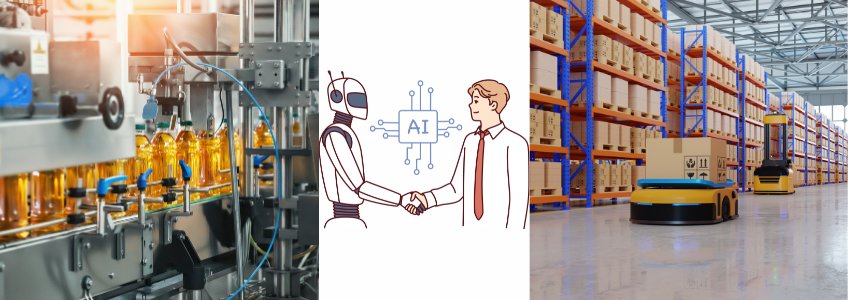
Adopting packaging automation is highly advantageous for the manufacturers of the canned and packaged food sector.
7 minutes read
Introduction
In recent times there has been an increase in demand of canned and packaged food as people have largely started consuming instant food items. Technological advancements like packaging automation, are affecting this already dynamic and growing sector of canned and packaged food.
It is important to understand that the increase in demand for canned and packaged food is mainly due to the fact that it is time-saving and also safe. Therefore, in order to cope with this rising demand, the canned and packaged food sector is gradually adopting the process of packaging automation.
What is Packaging Automation?
The technological process of packaging that uses the modern machinery, and in certain cases even robotics, to optimize and streamline the entire process is known as packaging automation. The different steps like product handling, filling, sealing, labelling and palletizing the individual items for shipping – are involved in the packaging automation process.
By implementing the process of automation in the packaging of canned food items the manufacturer enhances the speed of production and their dependency on human labour also decreases. Packaging automation therefore, optimizes the entire production process and improves the quality of the products manufactured.

What are advantages of Packaging Automation?
There are certain benefits that the manufacturers of canned and packaged food items enjoy by adopting the process of automated packaging.
- Accuracy – Using an automated packaging system increases accuracy of the packaging process. It reduces the scope of human errors and also reduces the amount of waste generated. This contributes to an enhanced process of production and improves customer satisfaction.
- Expenses – Despite the cost of initial installation of all the machineries for packaging automation being quite high, the benefits that it will yield in a longer period of time exceeds the initial investment. There is a decrease in the amount of money previously spent as labour charges. There is also an increase in the overall efficiency level of production which leads to significant cost savings in the long run.
- Efficiency – Implementing an automated packaging process leads to an increased rate of production without any compromise on the quality of the products manufactured. The overall production increases as machines operate continuously, reducing the scope of human errors.
- Adaptability – The machineries used in the automated packaging process are more flexible than the humans, in adapting to different formats of packaging or types of products to be packed. This flexibility allows the manufacturers to adapt to the changing market trends of the food industry.
- Safety – With the automatic machines replacing the humanly operated ones, the risk of injury due to hazardous tasks are minimized. This ensures a safe work environment for the employees.
What are the drawbacks of Automated Packaging?
There are always two sides of the same coin. Despite all the advantages of implementing packaging automation, there are certain drawbacks that the canned and packaged food manufactures need to keep in mind.
- As stated in the previous section, the setting up of an automated packaging system requires a lumpsum amount of money. Hence, the manufactures should decide carefully, by calculating their return on investment (ROI), before making such a huge investment.
- Implementation of automated packaging system can also lead to job displacements. The manufacturers should consider the impact that the introduction of packaging automation will have on their existing workforce.
- It is also difficult to integrate the automated machineries into the already existing production system. This integration process is time-consuming and complex. It also requires proper planning and coordination to avoid any system breakdowns.
- It is also important to remember that automated machines require regular maintenance. This is provided mostly by trained professionals only, which adds to the already existing operational costs.
What is the future of Packaging Automation?

The market trends of packaging automation of the food processing industry are continuously evolving. New food processing innovations and technologies are being incorporated by the canned and packaged food sector to further packaging automation.
- Adopting Sustainable Packaging – Automated packaging system play an important role in reducing the amount of waste produced and increases the amount of recyclable waste. This encourages sustainable packaging practices which is environment friendly.
- Integration of AI – Artificial Intelligence (AI) is being integrated with automated packaging system to optimize the packaging processes, improve product quality and predict any future trends or needs.
- Enables Customization – Automation of the packaging process of canned food enables the manufacturers to provide the customers with a greater variety of customizable options, without hampering the product quality or food production efficiency.
- Using Robotics – Even though robotics have not been adopted by most of the canned and packaged food companies, it is becoming an increasingly popular trend to use robotics along with system automation. Collaborative robotics can work with humans and carry out dangerous tasks with precision.
Conclusion
Therefore, despite the few drawbacks involved in applying packaging automation to canned and packaged food sector, advantages like enhancing safety, efficiency, reducing waste generation and improving product quality- integration of automated packaging system is the current trend in food industry. With technologies evolving by the hour, packaging automation is a practice that will be furthered even more in the near future.
If you are interested to achieve similar success stories, write to us!
